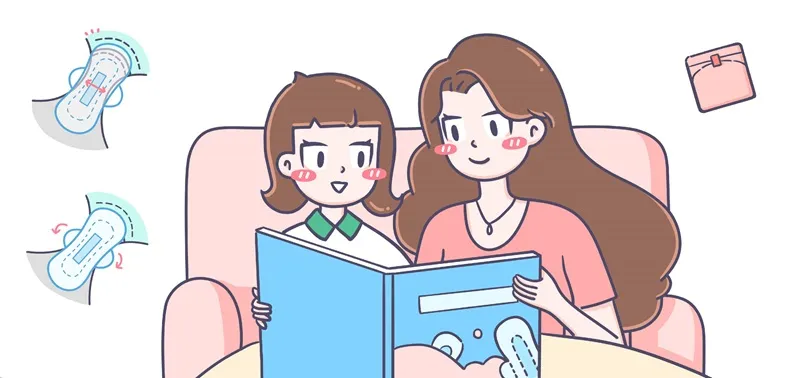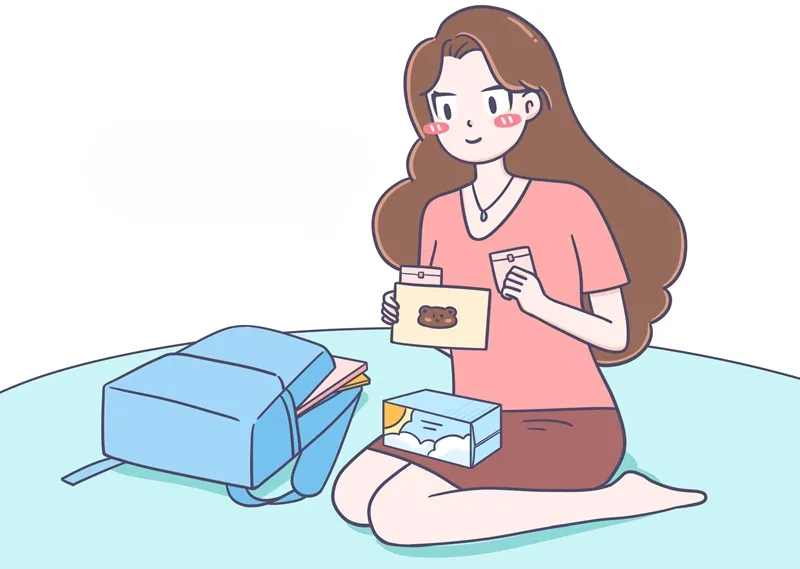Wondering what to expect on your daughter’s first period? You’re not alone. Moms everywhere are asking: How will I know when it’s coming? What should I say? How can I help her feel prepared—not scared—when her period starts? Let’s talk about the real signs, the basics, and how to make this milestone less confusing for both of you.
What to Expect on First Period: Early Signs and Changes
Before your daughter’s first period, her body gives you some heads-up. Here’s what to keep an eye out for:
- Breast development: Usually the first sign of puberty, often starting around age 8. Most girls get their first period about 2-3 years after their breasts start to grow.
- Pubic hair: Hair growth in the pubic area usually shows up 1-2 years before her first period.
- Vaginal discharge: A white or yellowish fluid in her underwear about 6-12 months before her period is totally normal.
- Other clues: Acne, mood swings, a sudden growth spurt, and sometimes mild abdominal pain or cramps can all show up as her body gets ready for menstruation.
These early signs of puberty are the perfect time to start talking about periods—before the first drop of blood appears. For more on early puberty changes, check out our First Signs of Puberty in Girls.
When Will My Daughter’s Period Start? Predicting the First Cycle
The average age for a first period (menarche) in the United States is now 11.9 years for girls born between 2000 and 2005—down from 12.5 years a few decades ago. Some girls start as early as 9, others as late as 16. Genetics, body size, stress, and even diet can all play a role.
If you want a fun, low-pressure way to guess when her first period might occur, there are online quizzes and period calculators that use questions about breast development, pubic hair, and other symptoms. Just remember, these are only estimates—every girl is different.
What Will Her First Period Be Like? The Real Basics
- Length: Most first periods last 2-7 days.
- Flow: It might be just a few spots of brown or pink, or a light flow. The color can range from bright red to dark brown and everything in between.
- Irregular cycles: It’s super common for cycles to be unpredictable at first. There might be weeks or even months between the first and second period. It can take a few years for things to settle into a regular pattern.
- How much blood: Even if it looks like a lot, the total is usually just 3-5 tablespoons for the whole period.
If your daughter is feeling nervous about her changing body, our [Feeling Emotional During Puberty guide can help you support her emotionally.

How to Start the Conversation About Puberty and Periods
The best time to discuss periods is before your daughter starts menstruating. Here’s how to keep it real and supportive:
- Start early: Use everyday moments—like shopping for period products or seeing a tampon commercial—to start talking.
- Use clear words: Say “period,” “vagina,” and “menstruation.” Kids can handle it, and it helps remove embarrassment.
- Answer simply: If she asks, “Does it hurt?” or “Why do girls get periods?” keep it short and honest: “It means your body is working just like it should.”
- Show and tell: Use diagrams or books to explain what’s happening inside her body, from the uterus to the vagina.
- Stay calm: Even if you feel awkward, she’ll take her cues from you. Let her know you’re always there for questions—no topic is off-limits.
- Prepare together: Make a period kit with pads, period underwear, a change of regular underwear, and a comforting snack. Stash it in her backpack or locker so she feels ready, not worried about leaks.

- Include dads and caregivers: Fathers and other caregivers can (and should!) be part of the conversation. It helps break the stigma and builds confidence.
Want more tips? see our guide How to Talk to Your Daughter About Puberty.
Unique Tips: What’s New for Moms and Tweens
- Earlier periods: Girls are starting their periods younger than ever—sometimes as early as age 9. That means it’s smart to start these conversations sooner.
- Cycle tracking: There are apps and online tools to help girls track their cycles and symptoms. These help her feel more in control and less confused by irregularity.
- Period poverty: Not every family can easily afford period products. If your daughter or her friends need help, talk about where to get free or low-cost supplies.
- Period product options: Pads, tampons, menstrual cups, and period underwear are all available. Let her try different options to see what she feels most comfortable with. Some girls prefer pads or period underwear for their first cycles.
- Normalize the conversation: Remind her that periods are a healthy, normal part of growing up—not something to hide or feel embarrassed about.
Real-Life Stories: Moms Share Their Experiences
“I noticed my daughter’s first signs of puberty—breast development and pubic hair—around age 9. We started talking about periods right away, so when her first period arrived at 11, she felt prepared and not scared. We even made a ‘period kit’ together for her backpack. She loved the idea of being ready, just in case.” —Sarah, mom of two
“My daughter’s first period was just a few brown spots, and she was worried something was wrong. We talked about how periods can look different at first, and now she knows what to expect.” —Jessica, single mom
FAQs: What to Expect on First Period
What are the early signs my daughter will start her period soon?
Look for breast development, pubic hair, vaginal discharge, acne, mood swings, and a growth spurt. These are all signs puberty is underway and her first period is likely within a year or two.
How long will her first period last?
Anywhere from 2 to 7 days is normal for a first period.
Is it normal for periods to be irregular at first?
Yes! It can take a few years for menstrual cycles to become regular. Gaps of weeks or months between periods are common in the beginning.
How much blood will there be?
Usually about 3-5 tablespoons in total, though it may look like more.
Should she use pads, tampons, or something else?
Most girls start with pads or period underwear. She can try tampons or menstrual cups when she feels ready. Let her choose what feels most comfortable.
What if she gets her period at school?
A period kit with pads, clean underwear, and a snack in her backpack helps her feel prepared and less anxious about leaks or surprises.
When should I call the doctor or pediatrician?
If your daughter is younger than 8 or older than 16 and hasn’t started her period, or if her periods are extremely heavy, last longer than 7 days, or come with severe pain, check in with her doctor or pediatrician.
Ready to Help Your Daughter Feel Prepared?
Your daughter’s first period is a big milestone, but it doesn’t have to be stressful. Start talking early, keep it real, and make sure she has the period products and support she needs. For comfy, confidence-boosting bras and period underwear designed just for tweens, check out our training bras for tweens and our First Bra Guide.
Remember, knowing what to expect on first period helps you and your daughter feel prepared—every step of the way. If you’re searching for what to expect on first period, you’re already helping your daughter feel more confident and cared for.
